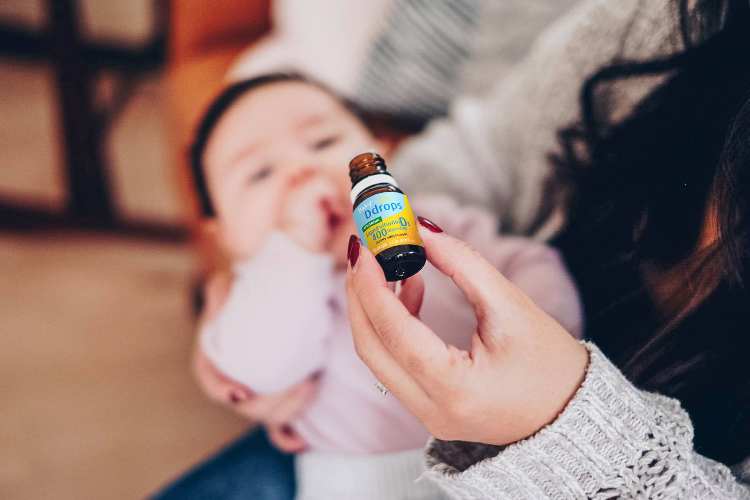July 18, 2017
We all remember the feeling: the last bell rings, establishing the start of summer vacation. A whole summer ahead of you to do whatever you’d like, with no homework to worry about. For parents and children alike, the last thing that comes to mind in summer is vitamin D supplementation. Children can get plenty from their diet and the sun, right? Not necessarily…
Recent studies have shown:
-
- 30-80 per cent of urban toddlers are low in vitamin D.
- 70 per cent of children and adolescents are not getting enough vitamin D.
- More than one-third of children taking a vitamin supplement still did not receive enough vitamin D and calcium.
What about sunlight?
Vitamin D can be made in the skin when exposed to direct sunlight exposure. The American Academy of Dermatology (AAD) does not recommend getting vitamin D from unprotected sun exposure due to risks associated with ultraviolet (UV) radiation and the development of skin cancer. The ability for children to make vitamin D from sunlight depends on the following:
- Sunscreen use: Children (particularly babies) and those with fair skin are advised to avoid direct sun exposure because of the risk of skin cancer. Using sunscreen blocks skin from producing vitamin D.
- Time of day: UVB or short-wave ultraviolet rays are for vitamin D production in the skin. These rays are strongest in the midday sun.
- Time of year: The sun’s radiation is strongest in the summer, declines in the fall, and is lowest in the winter. For some children in fall and winter, no vitamin D can be made or more time needs to be spent in the sun to produce vitamin D.
- Geography: For children who live farther from the equator in northern United States, Canada, the United Kingdom, and Northern Europe, the sun’s rays may not be strong enough to allow vitamin D to be made.
- Weather: Children who live in regions prone to cloudy, rainy, cold weather may have inconsistent sun exposure.
- Lifestyle: Children may spend more time indoors, even during summer vacation. A recent UK study found on average, children were playing outside for just over four hours a week.
- Skin color: Children with lighter skin need to spend less time in the sun to absorb the same amount of vitamin D as those with darker skin.
-
What about diet?
To get 600 IU of vitamin D a day through diet alone, you would need to consume:
- 6 glasses of milk
- 4 cans of tuna
- 1 medium-sized fish
- 20 eggs
-
Vitamin D is found in very few foods, mainly fish, fortified milk products with trace amounts, in some cereals, and eggs. Children would probably need to consume unrealistic portions in order to meet their vitamin D needs.
Why do children need vitamin D anyways?
The need for vitamin D doesn’t stop after infancy!
- Vitamin D supports normal bone and teeth development, and muscle strength
- Vitamin D helps the body use calcium and phosphorus to build and maintain strong bones and teeth in children.
- Health authorities consider vitamin D as a factor in the maintenance of good health
Average for school-aged children 6 to 12 years old will:
- Grow 2.5 inches per year
- Gain 5-7 pounds per year
How much vitamin D is recommended?
Health authorities Vitamin D recommendations for children:
- Multivitamins often contain small amounts of vitamin D, so always read the labels carefully
- Check with your practitioner about specific needs around vitamin D supplementation.
Why choose Ddrops Booster?
- Easy: Just one tasteless drop makes Ddrops products easy to take. Ddrops can be dropped onto a clean surface such as a spoon or added to food or drink.
- Safe administration: Ddrops Booster is administered as a controlled drop and is easy for children to swallow. Gummies and chewable products are not recommended in children under the age of 4.
- Pure: Each drop of Ddrops contains only two ingredients: pure vitamin D3 (cholecalciferol) and fractionated coconut oil. Ddrops products contain no artificial flavors, preservatives, or colors, and are free from most common allergens
- Options: Flexible dosing options with Ddrops include:
- Baby Ddrops 400 IU
- Kids Ddrops 400 IU
- Ddrops Booster 600 IU
- Tested: Ddrops products were developed through extensive research, rigorous safety tests and have been used in clinical trials in children
- Trusted: Ddrops products have received awards, recognitions, and certifications worldwide. Ddrops are recommended by many healthcare practitioners across North America
Don’t forget vitamin D this summer! It’s always a good idea, no matter what time of year, to talk to your healthcare practitioner about vitamin D supplementation for your children.





Để lại một bình luận
Trang web này được bảo vệ bằng hCaptcha. Ngoài ra, cũng áp dụng Chính sách quyền riêng tư và Điều khoản dịch vụ của hCaptcha.